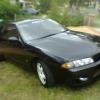Is Blocking The Std Plumback Bad?
Announcements
-
Similar Content
-
Latest Posts
-
By Dose Pipe Sutututu · Posted
Here's the chart for fuel pressure vs. current draw, assuming your base fuel pressure is 3 bar and you run like 0.5bar boost on WOT, you should only momentarily hit 9amps here and there. (Ignore my prev post, I cannot read a chart these days it seems) -
Those comp test results are not hideous. Whether they are accurate or not (ie, when that comp tester says 140 psi, is the real pressure120, 140 or 160?) is unknown to us. The state of the battery used to crank it over is unknown, etc etc. Many people around here would say that the absolute values and the spread are perfectly fine to just add boost and keep going. I personally would be happier with a narrower spread than that, but even the diff between 125 and 145 is not terrible. That one cylinder at 125 though, has probably copped some damage relative to the others. You should inspect the valves seeing as you've got it open. Do you know how to measure installed ring gaps? That, and an inspection of the rings themselves, is how you will determine whether they need to be replaced. If you're not good to do these things, take the block and the pistons and rings to a shop that is, and ask them for the go/no-go on them. Do the bores need a hone at all? If so, you might well be justified in getting some different pistons in order to get away from the ring supply problem. Whether you're happy to spend a lot more money right now, on more gear, rather than less money, but an amount that looks stupid given that you will only get a handful of rings in exchange for that money, is for you to decide.
-
By iain_ST44GA · Posted
also possibly backed up to my filler and shat down it! 🤣 -
By Julsmadrid · Posted
Ok so i would love some advice here please, i purchased an R33 a few months back and its had a few mods done to the engine, its an RB25det running a Master ECU, 1200cc injectors, bigger turbo, oil cooler, oil filter relocation kit, Spool H-beam rods, acl/ross pistons. When i removed the motor from the vehicle (as its getting a respray) i thought i would compression test it and these are the following results. Cylinder 1-145psi, Cylinder 2-143psi, Cylinder 3-125psi, Cylinder 4-145psi, Cylinder 5-140psi, Cylinder 6-135psi this test was done with the motor on the ground and powering up the starter motor. I dropped the sump and found broken oil squirters on cylinder 3,5 and 6. I was told my rings are probably worn so i stripped the motor completely to get a new set of rings for it. The trouble is no one has these rings anywhere and they have to be custom made by Ross over in the states and will cost about $600+$200 delivery. My question is how can i tell if my rings are at fault and if they are still ok and is this price ok for a set of rings? -
By soviet_merlin · Posted
What sold me on Trailer Park Boys is this scene: Great stuff, just stay clear from the new Netflix production.
-




.thumb.jpg.1b7f9b555236b5ea56c3fed20c733de8.jpg)

Recommended Posts
Create an account or sign in to comment
You need to be a member in order to leave a comment
Create an account
Sign up for a new account in our community. It's easy!
Register a new accountSign in
Already have an account? Sign in here.
Sign In Now